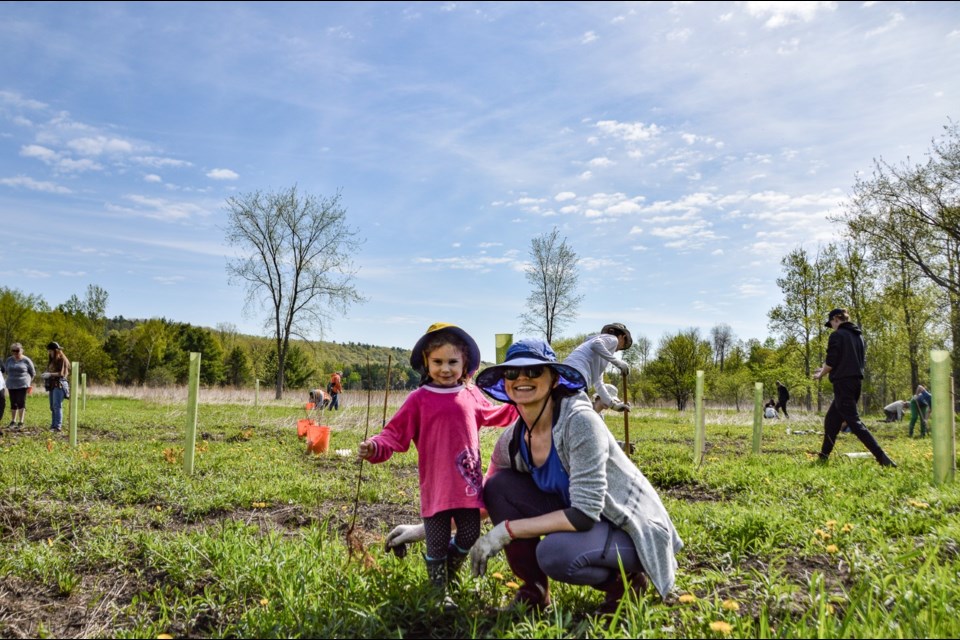Throughout the year, anglers can be seen on the banks of the Nottawasaga River looking to catch Chinook salmon, rainbow trout, brown trout and the occasional walleye, as well as brook trout in the headwaters of the river.
Historically, the Nottawasaga River has supported native fish such as lake sturgeon, brook trout and brook lamprey. Between the early 1900s and the 1970s, rainbow trout, brown trout and Chinook salmon moved into this river system. The unique habitat the Nottawasaga River provides helped these fish thrive, creating the world-class fishing opportunities we experience today.
Some of the greatest fishing hotspots along the river are in the Township of Essa and the Town of Wasaga Beach. In September, Essa hosts a river bank fishing derby, attracting hundreds of people to the area each year. Anglers who prefer fishing on Georgian Bay set sail from Wasaga Beach and Collingwood to catch rainbow trout and Chinook salmon.
Like other forms of tourism, this sport and hobby makes huge contributions to local economies. During their fishing excursions, many anglers purchase fishing gear, food, and gas. They may visit local businesses like coffee shops and restaurants, and stay at local accommodations. According to the selected results from the 2020 recreational fishing survey in Ontario, an estimated 1.15 million anglers spent $1.74 billion on fishing-related expenses across Ontario.
The Nottawasaga River is one of the largest rivers that flows into Georgian Bay. Small streams arise from the Niagara Escarpment near Orangeville, and come together as the upper Nottawasaga River. The river flows 150 kilometres north to Georgian Bay, collecting water from tributaries such as the Mad River, the Pine River and Willow Creek along the way.
Although the Nottawasaga River provides excellent fish habitat, water quality in some parts of the river is impacted by urbanization and agriculture. Through data collection and analysis, the Nottawasaga Valley Conservation Authority’s (NVCA) biologists have identified transition zones where water quality and aquatic habitat conditions decline.
The NVCA partnered with Nottawasaga Futures’ South Simcoe Streams Network and established the Nottawasaga River restoration program in 2019 to restore these transition zones, which make up roughly 10 km of highly impacted river habitat.
By engaging with a wide range of volunteers, funders, landowners, community groups, local municipalities, and other partners, the two groups have been working to stabilize eroding river banks, install fish habitat, plant trees to keep the river cool, and construct floodplains to reduce the effects of flooding and erosion.
Not only do these restoration projects improve local aquatic habitats; they help reduce the impacts of flooding and erosion, as vegetated stream banks are more likely to withstand heavy rain and remain stable.
To understand the significance of the Nottawasaga River restoration project, we encourage everyone to watch this mini-documentary. If you’re looking to volunteer to help plant trees and restore the river this spring and summer, register on our website at nvca.on.ca.
Fred Dobbs is the manager of stewardship services at the Nottawasaga Valley Conservation Authority.



